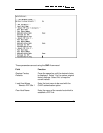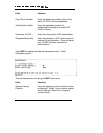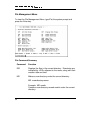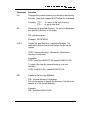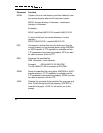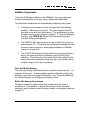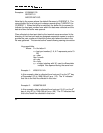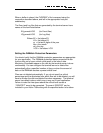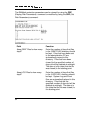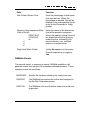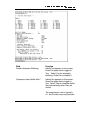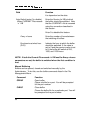
61
RAMdisk Organization
There are 32 Mbytes available on the RAMdisk. You may create and
remove subdirectories, and copy, move, rename and delete files.
The directories listed below are automatically created by the system:
• A subdirectory is created for each host port that has buffering
enabled, 1MB maximum per port. The data collected from the
host port is stored in this subdirectory. The subdirectory is given
the same name as the host port by default. To view the host port
directory, type
OPBUF
h# (Where h# is the desired host port
number)
at the system prompt.
• The \SENTFILES directory stores a copy of each file sent to the
administration PC. These files can be deleted automatically after
a preset number of days or when space available on RAMdisk
reaches a critical level.
• The \LOGFILES directory contains files that are generated each
day by the terminal server to maintain a record of that day’s
activities. These files are of two types: Event files, which list the
alarms that were processed during one day, and Log files, which
contain a copy of one day’s log history.
Host Port Buffer Naming
The user may change the default directory name for each host port. For
example, if Host port 1 is being used to monitor a Meridian switch, then
directory name may be changed to Meridian. See "Automatic Buffering"
for more information on changing the directory name.
Buffer File Naming Conventions
Filenames consist of capital letters and numbers and can have a
maximum of 12 characters. A period followed by a three-character
extension may be used provided the total number of characters does not
exceed 12.



